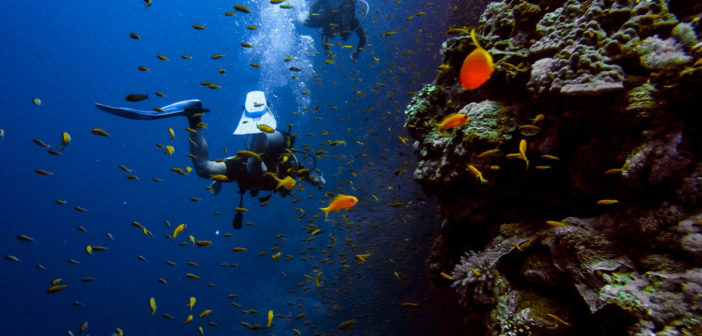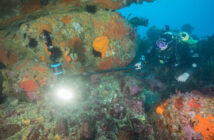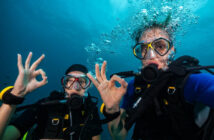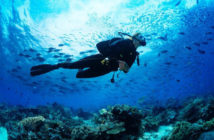It’s not how many words a picture tells, it’s what they say…
Choosing the right image to promote your business is an art; a critical one that’s worth putting some special effort into, because not every image tells the right story.
It’s challenging enough picking the best photos to stick on a big piece of cardboard for that ubiquitous birthday collage you made one time for a friend’s surprise party.
You know the deal. The faded baby pictures filched from an old family album, the embarrassing graduation photos with big hair and strange-looking pants or jeans, the slightly out of focus snap posing with a first car, the singularly awkward image of your friend, mike in hand, fronting their first (and last) garage band. So much harder when what’s at stake is something more important than a few quick laughs and a red face. So much more of a challenge when it’s to promote your business.
I live in a rural area, but one that is a hotbed of real-estate activity. This is Cottage Country for the GTA (Greater Toronto Area). This is vacationland. This is where city folk drive to at weekends and where they visit for a week or two in the summer. This region is a fix for life in the fast lane.
And because of that, property values here are always climbing, and sometimes it seems as though my farmer friends across the road and I, are the only permanent residents without a real-estate license.
The favoured marketing method popular with local brokers is a large (48 OR 64-sheet) billboard featuring a studio portrait with some text telling passing motorists “I sell stuff.” They are a bloody eyesore; seemingly all the same, as creative as a peanut butter sandwich, and surely ineffective. One might argue that ANY huge promotional picture plopped among the rocks and trees on the margins of local highways and side roads is a little disturbing, but really. What’s the thinking behind paying whatever it costs to slap a heavily filtered picture of you, your teeth, and your two-thousand-dollar business suit beside Highway 141 en route to Bracebridge?
In some cases (the tight leather jeans and open-neck blouse variety), it’s not clear exactly what’s on sale. Better not to go there, but one is left thinking the secret to being successful in the property market centers on the cult of personality, and sex appeal?
However, putting my super judgmental attitude aside, there is a good marketing lesson in all of this for the rest of us: Be careful what you say about your business and about yourself when you use a picture.
Perhaps, studio portraits sell second homes and lakefront. I’d guess a better alternative would be a nice twilight landscape with a post and beam, several hundred square-meter luxury home with lights burning, native perennials in bloom along the pathways, and a loving couple enjoying a cocktail on the veranda.
Wouldn’t that be more effective? I haven’t done the market research. But, I’m old-school. I want to relate. So, who can tell; I am probably totally wrong?
Could the secret be instead a tritone photo of a little <fixer-upper> cabin in the woods, moose munching waterlilies in the background, someone carrying an armful of firewood in through the front door? On the face of it, that would be more my speed. Perhaps that’s a happier, more appropriate alternative.
So, here’s a question: Forget real estate, what’s the best image for our industry? Is there one? Is there a sort of boilerplate we can fall back on?
I’m sure you agree, as a community, as an industry, diving — scuba and freediving — has a built-in, no-holds-barred, visual appeal second to none. Colourful, dynamic, complex, fascinating, intriguing, sometimes a little scary, and often a little edgy and offbeat, pictures of just about every underwater environment have the potential to leave a lasting visual impression.
It’s just a case of finding the right image; one that conveys all that AND that promotes your dive store. Easy, right?
If I remember correctly from a photography evening class a few winters ago, there are four variables to consider when creating (or choosing) a good photograph. They are: exposure, lighting, composition, subject; but not necessarily in that order.
When it comes to marketing, there’s one other <variable>: what message does it send?
Anyhow, let’s look briefly at each element and see where we end up.
Exposure: This is the technical, camera nerd, variable; the one telling us that the camera settings (ASA rating, lens aperture, shutter speed, and co) are balanced to deliver a final image in which the highlights are not burned out, the shadows are not blacker than a pirate’s eyepatch, and the midtones are full of detail. Of course, this does assume one has either a “proper” camera and the wherewithal to use it, and/or can import digital image files into editing software such as Photoshop and fix any issues not perfect in the original. (I am not a particular fanboy of Adobe products, but Photoshop is my favourite software for working on camera-generated images and has been since before the Creative Suite branding. That’s to say circa 1990 and version 1.0. It might be worth checking out if you’re not already aware of it and what it can do.)
Okay, let’s stay clear of rabbit holes and say for our purposes right now, any image we choose should start out with a full range of tonal values… not too dark, not too light, and plenty in-between.
Lighting: Easily confused with exposure, but very different. An interesting photo has a range of light and dark. And perhaps some shadows and strong contrast between foreground and background. (Same goes for a painting or pencil drawing or any piece of art.)
Interesting pictures are rarely lit as flat as a pancake. The light may come from one side or the other, from the back, from the top. Light should model the subject, wrapping around it, making it stand out, and making the principle subject look three-dimensional rather than two. If you’re not sure what I mean, take the time to check out photos by masters of the art. Okay, so it’s doubtful you have an Annie Leibovitz portrait session or an underwater date with Tom St. George planned, but study those folks and ones like them and learn… see what they do and copy. (Sorry guys.)
As an aside, one of my favourite underwater photos, one that’s perfectly lit, is almost totally black with just the creature’s eye perfectly lit. It’s also monochrome but has all the impact of a Technicolor™ rainbow.
Composition: There isn’t time, and this isn’t the place to start teaching a fine arts class to discuss balance and movement, rhythm and focus, the Golden Ratio in classical architecture, the presence of Fibonacci’s sequence in the work of Michelangelo or any of that other “artsy stuff.” Let’s simply say that good composition is something many of us recognize as soon as we look at a picture. It leads the eye around the frame like a dog on a leash. The proportions and position of each element seem right. Good composition is somehow deeply pleasing and something that we recognize when we see it.
The perfect layout of a photo — its composition — and its importance is not that tough to learn (Google perhaps), and it’s certainly not a mystery. But I’m the first to admit, not everyone gets it. I had an aunt who was death behind a camera. It did not matter how much you suggested and what tips you gave her, every family holiday photo she ever took had a face exactly in the middle of the frame, the person’s leg’s cut off at the knees and the sky filling 50 percent of the picture. It made no difference if she had a Nikon or a Polaroid point-n-shoot in hand. The results were predictably poor. Best advice is, don’t be my aunt Doll.
Subject: And this my friends is where things get funky. This is where diving has drawn the strong suit. When we prepare to dive, when we are underwater, when we surface from our dive, there is interest. It might be water droplets on a mask and cheek, a close-up of a CCR handset, a youngster’s smile, a shark’s nose, a school of baitfish or the deadeye on an old sailing ship. There is little about the world of diving that isn’t a great photo waiting to happen. Scuba diving and Freediving are subject rich, that’s all there is to it.
Worth mentioning too that while there’s a lot that can be done with digital tools to fix marginal exposure, boring lighting, and poor composition, without an interesting subject, no photo is worth all that effort.
So, this begs one last question, and thoughts about that last variable: What’s the message you want to get across to customers? What’s the message you want to <project> about your business in that one picture that opens your website, or that greets punters arriving at your front door?
Is it a portrait of a fish? Is it a shipwreck? Perhaps it’s someone zooming through a cave behind a DPV? Could it be an octopus? Lighting, composition, exposure, cropping, colour, subject, size, all that’s important. But more important is that it’s the right picture?
I don’t know and cannot help you choose because I don’t know what you’re selling or to whom. Every one of us is in a slightly different situation, and each of us is selling something subtly different to a unique group of people, and your place is not the same as another place… or that should be the case!
The only constant, the only thing that works for all of us is this: First impressions count: choose wisely
And please no studio portraits with fake grins and expensive suits… unless of course, it’s a drysuit.
Thanks for your attention. Next month, we’ll be talking about the missing link… but not Neanderthals, something entirely different.
Article kindly submitted by Steve Lewis, VP of Marketing at RAID.









